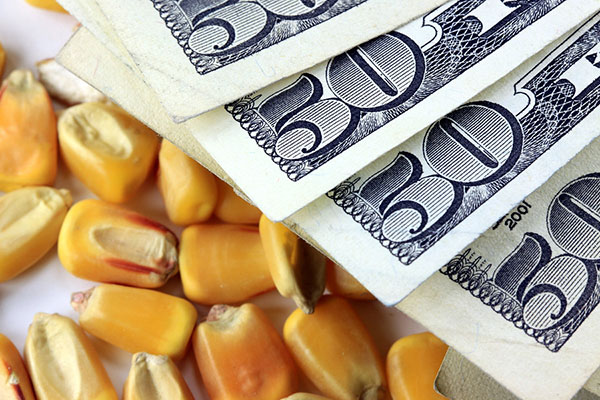
Food prices could double over demand, water scarcity
By Lin Taylor, May 21, 2016
Swelling populations and demand for food combined with ever scarcer water and land resources could lead to a doubling of food prices and trigger civil unrest in some developing countries, a new report says.
Demand for food with a higher environmental impact, such as meat, has surged as emerging countries like China and India grow in size and in wealth, said Martin Halle, policy analyst at Global Footprint Network (GFN).
"A few things are very clear: the demand for food is going up tremendously because of population growth," he told the Thomson Reuters Foundation.
"[Food production] is becoming more unstable because climate change is affecting production, in the context of growing land and water scarcity. There's very little leeway between supply and demand."
In the past, countries were able to meet those demands by growing more food on more land. But this has come at a cost, Halle said, since the planet is now running out of water and arable land.
The last time the world saw a severe food crisis was in 2007 and 2008, the report said, when extreme weather events hit major grain producing regions the year earlier, causing spikes in the demand and cost of food.
The higher prices led to social and political unrest in North Africa, the Middle East and South East and South Asia.
The report published this week by GFN and the United Nations Environment Programme (UNEP)said most of the same countries, namely Morocco, Bangladesh, Tunisia and Indonesia, are again at risk if food prices were to increase in the next few years.
CLIMATE CHANGE VOLATILITY
Climate change and extreme weather patterns will further increase volatility in food production, Halle added, meaning food prices will become more unstable in the coming years.
"The real game-changer comes when you factor in the environmental constraints - climate change, land scarcity and water scarcity, and all of these are linked," said Halle.
Drought is becoming more frequent and severe in places like southern Africa, and that - combined with the recent El Nino phenomenon - is taking a heavy toll on rural lives and economies.
For example, maize prices in South Africa, the continent's top producer of the staple crop, reached near record highs late 2015, in the face of rolling heat waves and poor rains over key growing areas.
Using models from data across 110 countries, the study found that if the cost of food doubled, household spending would increase by more than 10 percent in 37 countries.
Five African countries - Benin, Nigeria, Ivory Coast, Senegal and Ghana - would be the worst affected in terms of highest percentage loss to GDP.
The major emerging economies of China and India are forecast to lose $161 billion and $49 billion in gross domestic product (GDP) respectively with a doubling of food commodity prices.
"What this provides is a litmus test," said Ivo Mulder, economics advisor at UNEP. "We are overusing what is available for us and we don't really know what the magnitude of the risk is."
While higher income countries, like the United States, could benefit from food price hikes, Mulder said, their high demand for meat-based products is contributing to the problem.
"It's important to be honest about the types of risks that countries face," he said. "Because even if developed countries are less exposed than developing countries, it doesn't mean there is no risk at all." – Thomson Reuters Foundation







